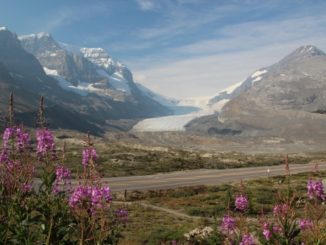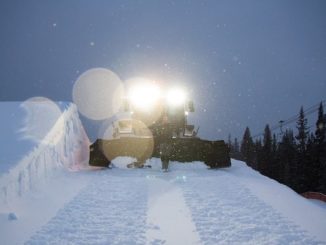I’ve been trying to make this story a reality for years now. I’ve come close a few times, but there’s always been an obstacle on the path to completion. If you can name a dog sledding company in southern Alberta, I’ve reached out to them for an interview. After a lengthy conversation with Jereme Arsenault, boy am I glad Snowy Owl answered my call. To say I’m psyched that this story is finally coming to fruition is an understatement. The goal when I started this series was to showcase exciting outdoor careers, and I think I’ve accomplished that to some degree, but as a dog owner/lover there was always something missing. Sure, I’ve covered Avalanche Rescue Dogs, Alberta’s Conservation K-9 Unit, and even the Wolfdogs of the Yamnuska Sanctuary, but the sled dogs kept calling. Finally, I am proud to present a profile of what it’s like to be a dog sled guide.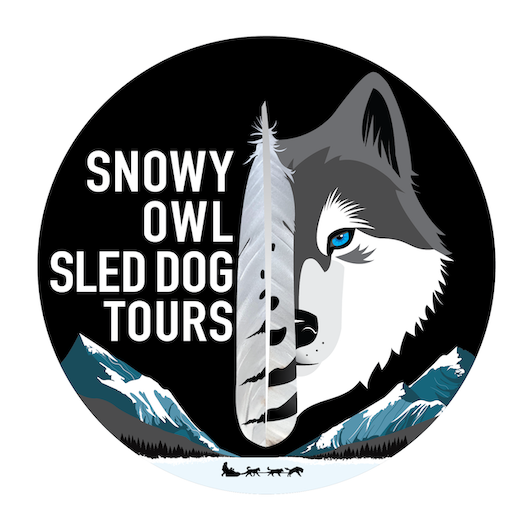
As mentioned, I had a great conversation with Jereme, who is the sole owner of Snowy Owl Sled Dog Tours. Snowy Owl has always been a family business that was started by Jereme’s parents back in 1983. In fact, it was the first incorporated dog sled tourism company in Western Canada. The company got its start with just six dogs. Today that number currently sits at 177, but the original bloodline still flows through Snowy Owl’s kennel today. Jereme, who’s been involved with the business since before he could walk, conservatively estimates he has logged more than 600,000 kilometres on a dog sled. With a mind-boggling number like that, I figure there’s nobody better to shed some light on what it’s like to operate a dog sledding business and give us an insiders look into one of Canada’s oldest sports. Without further delay, here are the highlights from an insightful interview.
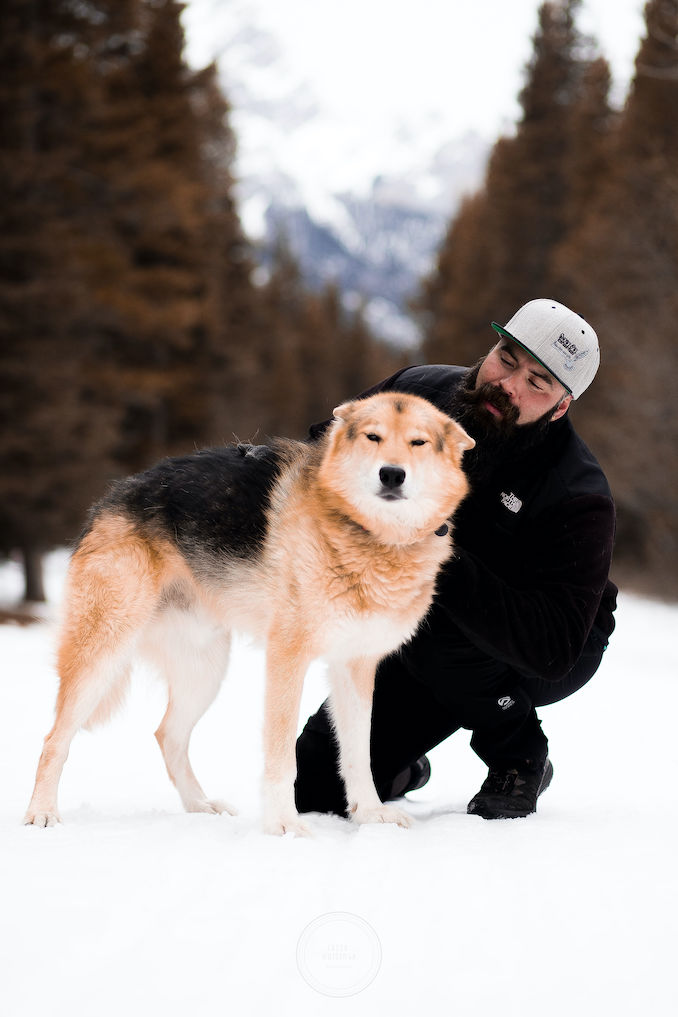
Calgary Guardian: “Let’s start with the dogs. You’ve got close to 180, which is astounding. What makes a good sled dog? Are you looking for specific traits?”
Jereme Arsenault: “Imagine you could pick the perfect athlete, well everything you can think of would be the same with the dogs. In the tourism industry, personality takes rank over performance. It’s not always about speed and strength, they’re all professional-calibre athletes. Our clientele wants to be able to interact with the dogs, pet the dogs, hug them, so personality is incredibly important. Work ethic is also a key piece of the puzzle, because at the end of the day they are working dogs. We also look for their ‘learnability’, which essentially means we’re looking at their willingness to learn. The ones that pay attention get the most attention. We’re trying to breed for positions within the team and we’re always thinking two years down the road. Training a lead dog takes longer than two years, so they need to earn their spot as the lead.”
CG: “To be successful, the dogs must work in teams. How do you decide which dog goes where in the lineup?”
JA: “Personality. At the end of the day it all comes down to the personality of the dog. They can’t all be lead dogs, or it would just be chaos.”
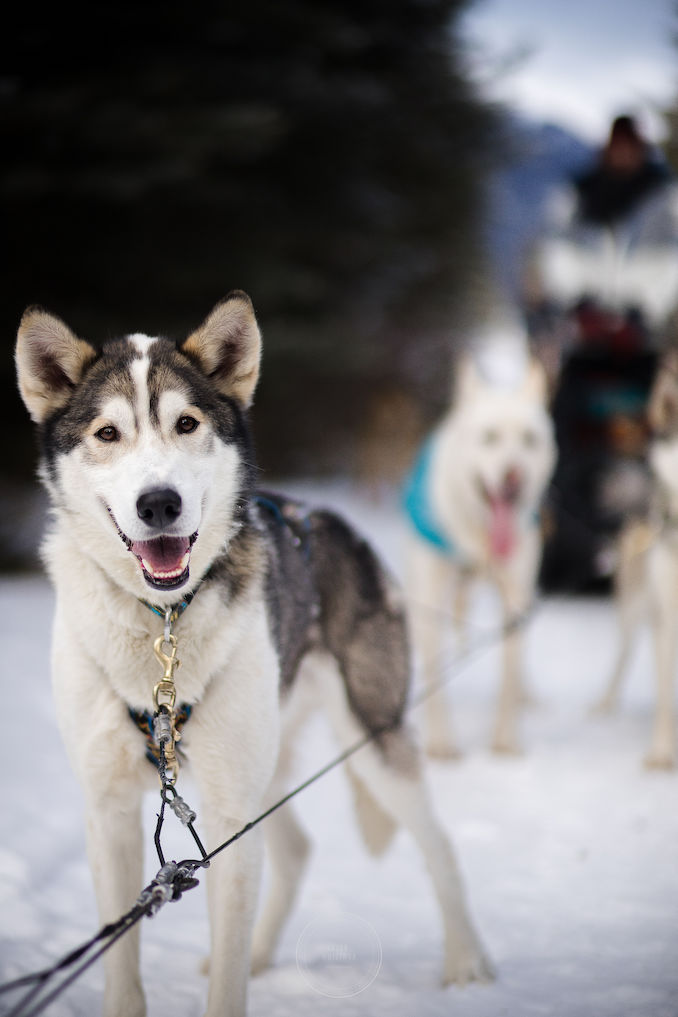
CG: “Considering what you said about the importance of personality in the tourism industry, are your dogs considered pets, working dogs, or a bit of both?”
JA: “A bit of both depending on what stage they’re at in their life. We like to refer to them as ‘working pets’.”
CG: “What’s the average career length for a sled dog?”
JA: “That all depends on the dog. As a general rule in my kennel, dogs are in their prime between two and seven years of age. Dogs in their prime will run between forty and fifty kilometres per day, which sounds like a lot but is nothing for a sled dog. If I were to enter a race with my dogs, we’d finish dead last because they’re used to stopping for photos! My dogs operate on a typical work week of five days on and two days off. We have enough dogs to operate up to sixteen teams at one time and still give between fifty and sixty dogs the day off. Dogs younger than two and older than seven are all assessed individually. All the dogs follow a strict diet and obviously get tons of exercise. They get lots of love from a lot of different people. Their absolute favourite thing to do is run and they are paid with affection.
At eight years of age the dogs are put up for adoption, but are typically still used while they wait to be adopted. The adoption process is lengthy and in-depth. We attempt to match a dog according to the lifestyle of the adoptive parents. Some of my dogs make great house pets and wouldn’t care if they ever went for a run again. There’s a ten visit minimum to adopt any of my dogs and in the final stages of the adoption process the dogs will go for sleepovers to ensure the match is right for both the people and the dog. These dogs gave me the best years of their lives, so I won’t just give them to anybody.”
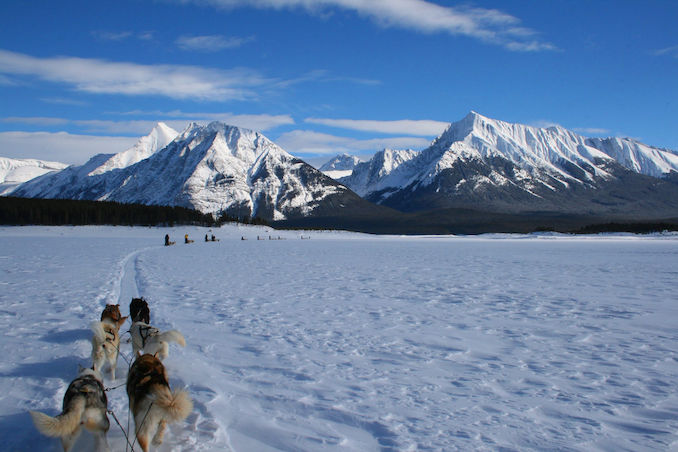
CG: “How many dogs are required to run a team?”
JA: “That all depends on the length of the tour, the snow conditions, and the temperature. Typically we’ll run between five and twelve dogs, depending on the weight of the sled and the terrain. Our sleds never exceed 500 pounds. The dog team can also play a factor, because you can’t put one huge dog with five smaller ones. It’s all about matching the right sized dogs together.”
CG: “Once a dog team is established, do you keep that same team together indefinitely?”
JA: “In the beginning dogs are on set teams, but just like in hockey the coach might shuffle the lines. Our dogs are shuffled as needed. All dogs perform differently depending on who the instructor is, the clientele for the day, etc. The dogs communicate 90% through body language, so you really need to check yourself and watch what you’re doing. Running a kennel is like running a massive pre-school, but in my case the ‘students’ can outrun you.”
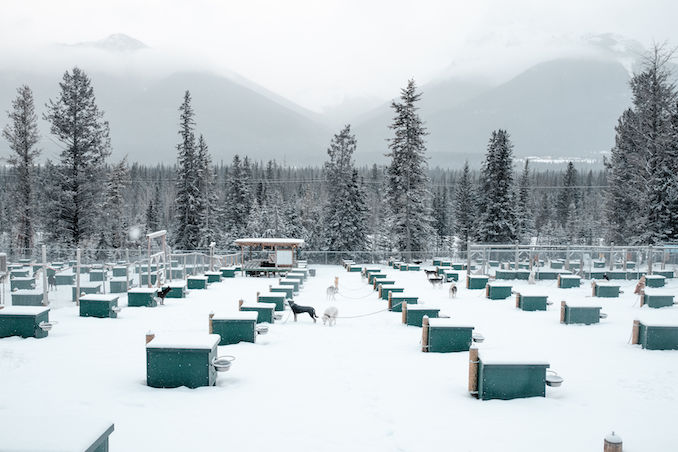
CG: “When the dogs aren’t working where do they live?”
JA: “This is the most important question you’ve asked so far. Like any outfit with this many dogs, they live in an outdoor kennel. Husky’s are well-equipped for life outdoors. The industry norm is to house sled dogs outside. We believe this is an acceptable practice provided the dogs are supervised 24/7, which mine are. Each of our dogs has their own four-season house that is hand-built by us. The kennel is meticulously cleaned six times per day to ensure the dogs remain healthy. Living conditions in most kennels across the world aren’t great. I’ve rarely been to a kennel where I’ve been impressed with the living conditions. We are proud of our kennel and aren’t afraid to show it off. We have always been very transparent about the care our dogs receive, but that all costs money. We’re fortunate that our kennel makes enough to put that money back into the dogs, but that’s not the case for everyone.
Most people don’t realize this, but there is no official governing agency for dog sledding except the SPCA and unfortunately they don’t know a lot about dog sledding. Nobody has ever checked Snowy Owl, EVER! Activists are constantly protesting the industry and they aren’t totally wrong, but there’s lots of ignorance out there. Tethering dogs seems to be the biggest concern, but there’s no evidence that tethering impacts them mentally. My dogs are tethered overnight, so they don’t kill each other, during meals so each dog can eat, and right before they go to work. Once they’re at work they’re set loose to run. But these dogs can’t be let loose unsupervised. Sled dogs are the closest living relatives to the wolf, so when these dogs fight they will fight to the death. Every breed of dog has been bred for a purpose, but when that purpose isn’t fulfilled you create problem animals. My dogs purpose is to run, so we see very few problems with our animals. In the end, there needs to be a governing body that sets a standard for this industry, but there’s not much interest from any level of government to make those changes.”
CG: “Switching gears for a minute, let’s talk about your guides. What type of qualifications or training do your guides need to operate a dog sled team?”
JA: “I prefer that my first-year instructors have no prior dog sled experience. I don’t want anyone mishandling my dogs or any heavy-handed instructors coming from another kennel. Of course I teach my team to discipline the dogs, but I want them to know when it’s appropriate and how to go about it. I also want them to know how to reward the dogs. If they’re green I can mould them to my liking. I prefer folks with forestry or farming backgrounds because they know what it means to suffer. The dogs and clients are always serviced first and then the guides. Guides average about twenty-four kilometres per day while on the trail, and then you have to take care of the dogs. There is no dog sled guide certification, but all of my guides have Level C Standard First Aid, with the majority holding Wilderness First Aid certifications.”

CG: “Let’s talk about the tours. Do you have specific areas or trails that you use or are you free to go wherever you like?”
JA: “We operate in Spray Valley Provincial Park, which wasn’t actually a provincial park when Snowy Owl was incorporated. We have access to a 100-kilometre trail system and our staging area are the Spray Lakes. The dogs need to be transported from the kennels to the staging area and back again each day. Little known fact is that recreational dog sledders can go almost anywhere, as long as dogs are allowed in that area or on that specific trail.”
CG: “What is the best thing about your job?”
JA: “I think I would have answered that question differently based on the stage of my career. It has changed as my career has evolved. Ten years ago, I would have said the best part of my job was sharing the experience with people from around the world and working with my best friends. I’ve always said, if dog sledding isn’t the coolest thing you’ve done, it’ll be in the top three! These days I’m eager to engage with my friends and the dogs on a deeper level. Building that relationship with the dogs is just so rewarding. My dogs have gotten him through a lot of tough times and that relationship cannot be taken for granted.”
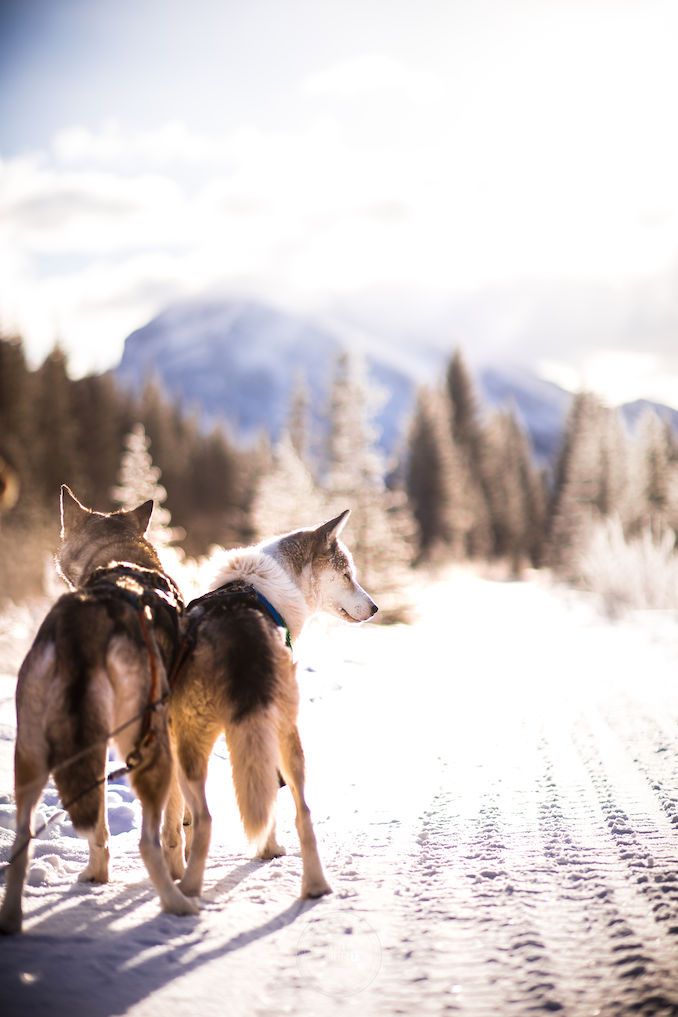
CG: “There are several other dog sledding operations in southern Alberta. Why should folks choose Snowy Owl? What sets you apart from the competition?”
JA: “The most commonly searched activity on the Travel Alberta website is dog sledding. We are a real, genuine experience. We’re not faking anything or covering up anything. When you walk away from this you’ll know how to drive a dog team on real mountain terrain. Of course you can opt for a guided sled. Riding in a sled is fun, but driving your own team is just way better! You’ll get the real deal, with class! It’s a high-end experience, but you get value. If you want healthy, happy dogs and a top-notch experience, we’re that company.”
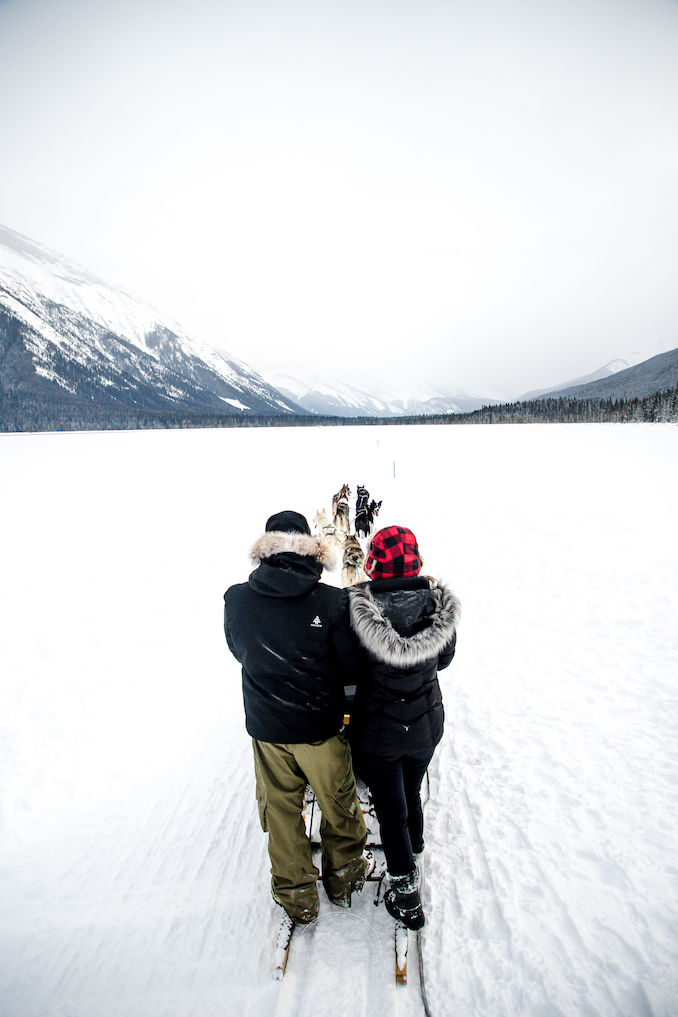
One thing we didn’t talk about was the celebrity status that his dogs have garnered. Over the years the Snowy Owl pack has been featured in numerous movies, commercials, tourism campaigns, and TV shows. You’ve seen them featured in various Travel Alberta campaigns, a Suzuki Super Bowl commercial, Santa Baby 1 and 2, and most recently in the Disney blockbuster Togo, to name just a few.
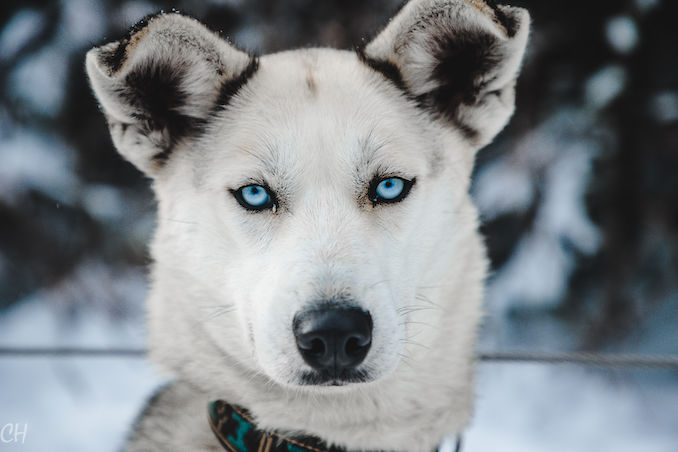
Jereme and the Snowy Owl team are busy gearing up for their thirty-eighth winter, which kicks off on December 1. I want to take this opportunity to thank Jereme for being so open and honest about dog sledding and offering a glimpse behind the scenes of this industry. I really appreciate your time and sincerity. Snowy Owl will be the only company I choose or recommend going forward.
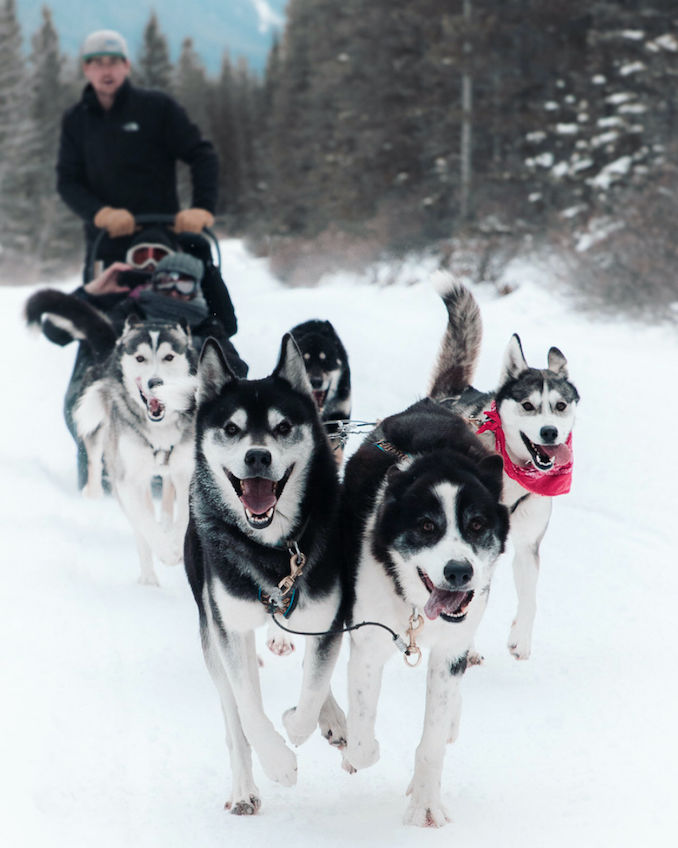
To learn more about the tours they offer, the welfare of their pack, the adoption process, how they’re dealing with the COVID-19 pandemic, what truly sets them apart from their competitors, or to book your next adventure, please visit the Snowy Owl website. You can also connect with them on Facebook and Instagram.
***
About this column:
Wild Jobs is a running series that focuses on people in outdoor-related professions. It provides a brief snapshot of their career and the duties that it entails. Please see my previous post, Wild Jobs: Guided Excavation Coordinator to learn more.


